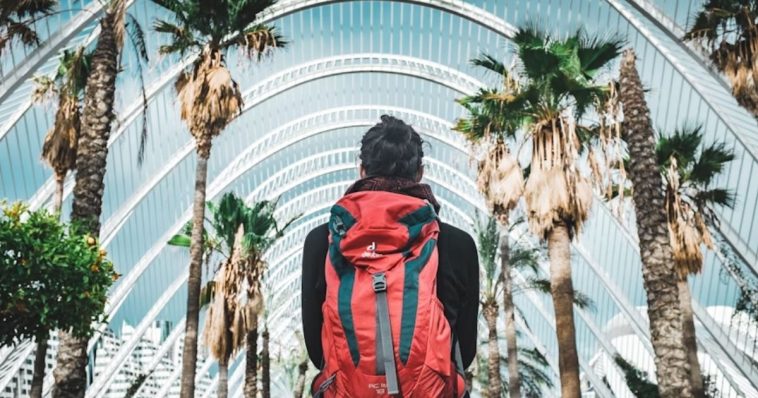Traveling with children is an adventure filled with curiosity, energy, and endless questions. But as family trips become more frequent, the impact on the environment and local communities grows. Sustainable travel isn’t just for solo adventurers or eco-conscious couples—it’s something families can embrace too. Teaching kids to respect nature and cultures while exploring the world sets lifelong habits and creates meaningful experiences for everyone. Here’s how to travel sustainably with kids without sacrificing fun.
10 Sustainable Travel Tips for Kids and Parents Alike

1. Choose Eco-Friendly Destinations
The first step toward sustainable travel is choosing destinations that prioritize environmental responsibility. Look for national parks, eco-resorts, and small local communities that are actively engaging in conservation efforts, protecting local wildlife, and promoting responsible tourism practices. Many eco-conscious destinations are certified by organizations such as Green Key, EarthCheck, or local eco-labels, which ensure that environmental, social, and cultural standards are met. These destinations often offer immersive experiences, such as nature walks, wildlife observation programs, and artistic workshops, that teach children the value of preserving the environment and understanding local traditions.
Focusing on slow tourism—staying longer in one location instead of rushing from city to city—helps children develop a deeper connection to the place and its people. This approach also reduces the environmental strain of constant travel. Families can enjoy hands-on activities such as helping at community gardens, participating in local craft workshops, or joining beach cleanups.
Tip: Whenever possible, travel during the off-season. Visiting popular destinations when they are less crowded minimizes environmental impact, allows for a more relaxed experience, and often lowers costs. Kids can enjoy exploring without the stress of large crowds, making the journey more memorable.
2. Travel Smart and Reduce Your Carbon Footprint
Transportation accounts for a large portion of a trip’s carbon emissions, so making conscious choices is essential. Opt for trains, buses, or shared rides instead of short flights when possible. If flying is unavoidable, try to book direct flights, which are more fuel-efficient. Consider participating in carbon offset programs that fund renewable energy or reforestation projects. Another simple but effective strategy is packing light—less luggage reduces fuel consumption and makes traveling with kids much easier.
Encouraging children to adopt eco-friendly habits can be both educational and empowering. Pack reusable water bottles, utensils, and snack containers for each child, teaching them that small choices can have a significant impact on the environment. You can also involve them in planning meals that reduce food waste or selecting accommodations that follow sustainable practices, such as providing biodegradable toiletries or implementing recycling programs. These small actions instill lifelong environmental awareness in a fun, hands-on way.
3. Choose Responsible Accommodations
When booking your stay, prioritize family-friendly accommodations that practice sustainability. Many hotels, lodges, and vacation rentals now implement eco-conscious measures, including conserving water and energy, using environmentally friendly cleaning products, and minimizing the use of single-use plastics. Look for properties that support local communities—hiring staff from nearby areas and sourcing food from local farms not only strengthens the economy but also gives children a real-life example of how tourism can be responsible.
Sometimes, choosing smaller guesthouses or homestays can provide a more immersive experience while reducing your ecological footprint compared to massive resorts. Children often appreciate the intimacy of these settings, where they can interact with locals and learn about daily life in a new culture. To make sustainability fun, turn energy-saving habits into a game: challenge your children to turn off lights, reuse towels, and follow eco-friendly rules throughout your stay. Reward them for small achievements—it’s both educational and enjoyable.
Tip: Even small actions, such as helping to refill a water jug instead of buying bottled water or separating recyclables, can teach kids that their choices have an impact.
4. Respect Local Cultures and Communities
Travel is more than just visiting landmarks—it’s an opportunity to learn, appreciate, and respect local cultures. Encourage children to participate by trying local foods, learning simple greetings in the local language, or observing cultural traditions. These experiences foster empathy, open-mindedness, and curiosity. Supporting local artisans, markets, and small businesses ensures that tourism benefits the community, rather than large multinational chains, and shows kids the value of ethical spending.
Introduce the idea of “leave no trace” in an age-appropriate way. Explain that activities such as picking flowers, feeding wildlife, or even accidentally littering can harm ecosystems. You can turn this into a playful challenge: see who can leave the campsite or park cleaner than they found it, or create a scavenger hunt that rewards careful observation of nature without touching or disturbing it. This teaches environmental responsibility and strengthens the connection between children and the places they visit.
5. Reduce Waste and Practice Eco-Friendly Habits
Traveling with children often means carrying snacks, toys, and convenience items, but minor adjustments can significantly reduce waste. Pack reusable bags, containers, and water bottles, and encourage kids to participate in sorting recyclables whenever possible. Opt for local, package-free snacks instead of individually wrapped items; not only does this reduce plastic waste, but it also introduces children to the flavors and foods of the destination, making sustainability a tasty lesson.
Turn eco-friendly habits into a playful activity with a “Sustainable Travel Challenge.” Kids can compete to see who generates the least waste during the day, spots the most eco-conscious behaviors, or creates creative ways to reuse items. Rewarding their efforts with small incentives, such as choosing the next snack or activity, reinforces the idea that mindful habits can be fun and rewarding. These small, consistent actions teach children that every choice—no matter how minor—can have a positive impact on the planet.
6. Engage Kids in Nature and Learning
One of the most effective ways to instill sustainable habits is by connecting children directly with nature. Activities like hiking, wildlife watching, or beach cleanups help children appreciate the environment while learning about the importance of protecting it. Participating in educational tours, nature trails, or local conservation projects enables children to witness firsthand real-world examples of environmental stewardship.
Involving children in hands-on conservation efforts—such as planting trees, removing invasive plants, or participating in community cleanup initiatives—gives them a sense of ownership and accomplishment. These activities help kids understand that they are integral to the solution, not just observers. Enhance the experience with journaling, photography, or drawing, encouraging children to document their eco-friendly actions, the wildlife they encounter, and the natural beauty they discover. Not only does this reinforce learning, but it also creates lasting memories that connect kids emotionally to the environment.
7. Choose Experiences Over Souvenirs
Instead of collecting material souvenirs that often become clutter or contribute to environmental waste, prioritize experiences that create lasting memories. Activities such as cooking classes, guided nature walks, cultural workshops, or volunteering opportunities enrich your travel experience and teach children valuable skills and lessons about the world. These hands-on experiences connect kids to the destination in a meaningful way, giving them stories and memories that last far longer than a plastic trinket.
Give children a voice in the planning process by letting them choose experiences that excite them. Whether learning to make traditional pottery, helping plant trees, or exploring a local forest with a guide, letting kids decide fosters appreciation for learning, exploration, and personal growth over accumulating possessions. Turning experiences into memorable adventures instills values of curiosity, empathy, and respect for people and nature.
Encourage kids to document these experiences through journaling, sketches, or photos. This reinforces the idea that memories and learning are more valuable than physical souvenirs.
8. Encourage Mindful Eating and Sustainable Food Practices
Sustainable travel also extends to food choices, which can teach children how diet impacts the planet. Prioritize local, fresh foods over imported or heavily packaged items, and encourage kids to try new dishes while discussing how their choices affect the environment. Reducing meat consumption, or selecting plant-based alternatives in regions where livestock farming is resource-intensive, supports sustainability and introduces children to diverse diets and flavors.
Make it fun and educational by turning meals into a learning game. Challenge kids to identify local fruits, vegetables, and ingredients, or explore how traditional dishes are made. Discuss how eating locally preserves biodiversity and supports farmers and communities. These experiences help children develop a mindful approach to food, understanding that sustainable choices can be delicious and impactful—ingredients to teach kids about regional diets and biodiversity.
9. Teach Kids About Wildlife Respect
Wildlife encounters can be exciting and educational when traveling, but it’s essential to model safe and respectful behavior at all times. Teach children to observe animals from a distance, avoid making loud noises, and never attempt to feed wild animals. Explain why disturbing habitats—even unintentionally—can harm ecosystems and the delicate balance of nature.
For example, families can safely watch elephants, lions, or giraffes from designated viewing areas while visiting national parks in Africa. Use the opportunity to discuss conservation efforts, anti-poaching measures, and the importance of protecting endangered species. Kids can also learn to recognize signs of animal stress and why touching or chasing animals is harmful. Turning these lessons into a fun “wildlife respect challenge” can make education interactive: reward points for correctly identifying eco-friendly behaviors or spotting animals without disturbing them. This approach makes wildlife observation both thrilling and meaningful.
Tip: Avoid souvenirs made from endangered species or animal parts. Instead, opt for locally made crafts or experiences that celebrate nature without harming it.
10. Travel with Reusable and Eco-Friendly Gear

Packing sustainably is a practical way to reduce environmental impact while teaching children the importance of responsibility and conscious consumption. Include reusable diapers, wipes, snack pouches, and water bottles, and pack clothing made from sustainable fabrics, such as organic cotton or recycled materials. Swap single-use toiletries for refillable containers, and opt for biodegradable sunscreen to protect your skin and the ecosystems.
Make packing part of the learning process by involving kids in selecting eco-friendly gear. Let them choose their reusable water bottle or snack containers and teach them why each item matters for the planet. Creating a checklist of sustainable items can turn packing into a fun game, reinforcing habits that can last a lifetime. With thoughtful preparation, children learn that eco-conscious choices can be practical, entertaining, and empowering, making them active participants in a sustainable journey.
Raising Little Eco-Explorers
Traveling sustainably with kids doesn’t mean limiting fun—it means enriching the experience. Families can make every trip educational, memorable, and environmentally conscious by choosing eco-friendly destinations, reducing waste, respecting cultures and wildlife, and engaging children in meaningful activities. Teaching kids to care for the planet while exploring it creates habits that last a lifetime and ensures that the world remains a place worth exploring for generations to come.



